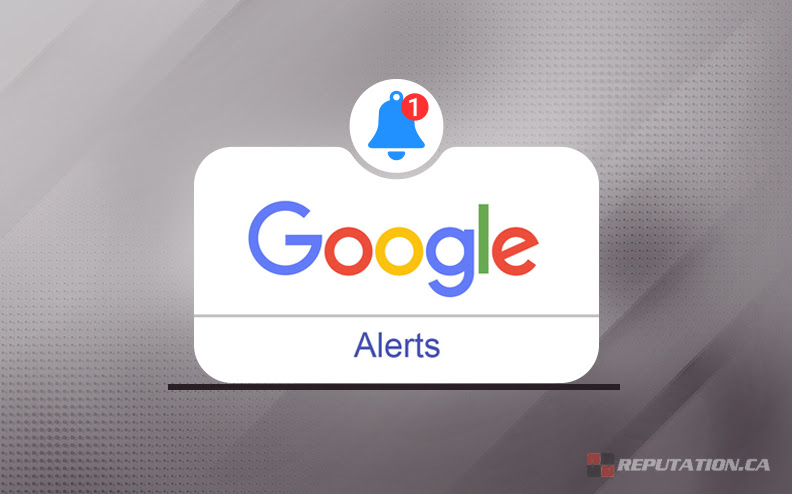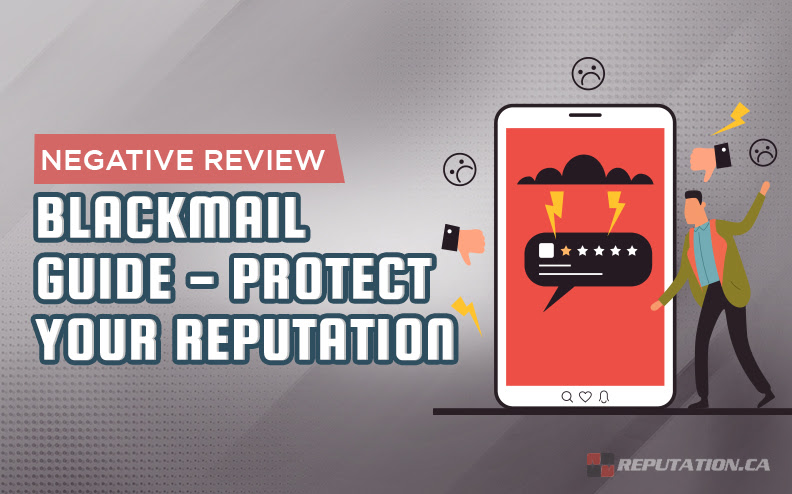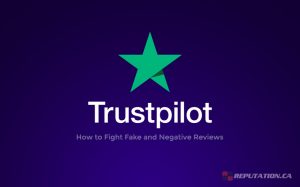A message from a stranger threatening to destroy your business online unless you pay them or give them free services – it’s absolutely terrifying when this lands in your inbox. Business owners face this exact scenario each day, and review extortion has become a big problem across just about every industry. When you’ve already spent years building up your reputation, the choice between giving in or fighting back feels nearly impossible to make.
Review blackmail has become a multi-billion-dollar problem that hits thousands of businesses every year. The FBI alone recorded nearly 87,000 extortion cases in 2024, and the numbers just keep going up. Blackmailers will send these threats through direct messages, emails and phone calls. But sometimes they’ll post them right on social media for everyone to see (usually with just enough disguise to slip past the moderators). What makes review blackmail so effective is that these scammers know how much sway sites like Google and Yelp have over customer spending decisions. Most business owners who receive one of these threats have no idea that federal laws, state laws and even the platform policies themselves are actually there to protect them.
Let’s talk about how you can protect your business from review extortion attempts.
Red Flags That Signal Review Blackmail
Any business owner needs to know how to tell the difference between an unhappy customer and someone who’s just trying to shake you down. When you get a genuine customer complaint, something actually went wrong with your product or service, and they’ll let you know about it. Review blackmail is a different animal – it happens when someone threatens to post bad reviews about your business online unless you pay them off or give in to what they want.
These scammers come at you from all sorts of different angles. Some of them will send you a message and just say it outright – either give me my money back (or send me some free products), or I’m leaving you a 1-star review. Other scammers are a little sneakier about it and like to hint around that they might be willing to rethink their rating if you throw in a discount code or maybe send them something for free. In either case, this isn’t legitimate customer feedback anymore – it’s straight-up extortion.

A big clue to watch for is the timing – specifically when these messages land in your inbox. Blackmailers will usually contact you before they post anything publicly. The entire strategy relies on threatening your reputation and offering you an opportunity to make the problem go away if you’re willing to cooperate with them. A common message might read something like – “I wasn’t happy with my order and I’m planning to leave a review about it. Would you be open to talking about this before I do?”
In some cases, the threats get a lot more aggressive and direct. Business owners will receive emails that straight-up demand cash in exchange for staying quiet – and these messages usually say that they’ll flood every review site imaginable with awful content. The scammers will usually threaten to hit every platform they can think of, or they claim to have plenty of friends who are ready to pile on and trash the business right alongside them.
The wording itself usually gives it away. A legitimate customer will complain about what actually went wrong with their experience and explain how it could have been different. Their complaints connect back to the product or service that they received from you. A blackmailer works differently – they only talk about the review itself and what you’ll need to do to make it disappear. And when you look at what they’re focused on, the motivation behind their message starts to come through.
Save All the Evidence You Need
Blackmail threats over a negative review are serious business, and you’ll have to save the evidence as fast as possible. Screenshots are your best bet here, and each one should include a timestamp somewhere in the image. It’ll show just when each threat came through and what the exact wording was.
Emails are solid pieces of evidence, and the main reason is the hidden metadata that gets embedded in every message. If you’ll have to save an email for your records, just save it all with the headers still in place – don’t forward it somewhere or take a screenshot of it. Email headers have lots of valuable information in them. Most email programs let you download or export messages as separate files, and this keeps that technical data safe in case anyone needs to look at it later.

Phone calls add another complication to the mix, and you should check your state’s recording laws to use them as evidence. Different states have different laws on this – some only need one person on the call to consent to the recording (which can be you), and others need everyone on the line to agree to the recording. After you’ve confirmed it’s legal in your area, save those audio files as fast as you can and back them up in multiple places. Voicemails work as evidence, too, and almost every smartphone will let you export them as audio files.
A basic timeline document will be one of your most important tools for keeping everything straight. Write down the date and time of every email, message, call or meeting connected to the blackmail situation. This type of timeline helps you see patterns in their behavior, and it makes the whole scenario much easier for law enforcement or attorneys to follow when they need to review what happened. Keep your evidence organized in one main folder with descriptive labels on everything – that way, you can pull up whatever you need fast.
Blackmailers will delete their messages and posts the second they suspect you are collecting evidence against them, so you’ll have to capture everything fast before it disappears. Save the same bit of evidence in multiple ways if you can manage it. Your priority should be to build a record that shows the full sequence of events from start to finish.
How to Report Reviews on Each Platform
After you’ve put together all your evidence, you can move forward with actually filing the report on each platform. Each one deals with the submission process a little bit differently, and they all have their own particular requirements for how you’ll have to submit everything. The best part is that none of them are that tough if you know where to look and what information they need from you.
Google has actually set up a pretty easy process for this. Every review card has a little three-dot menu somewhere on it, and that’s where you want to start. Click on those dots, and you’ll see an option that says “Report review” – go ahead and choose that. From there, Google will ask you why you’re reporting it, and that’s where you pick “Conflict of interest” from the list of reasons they give you. Yelp deals with fake review reports through its support center, and its process works a little differently from most other sites. Business owners need to submit a ticket under the “Report content” category, and that’s where the screenshots should be uploaded for review. Yelp wants to see specific timestamps and any direct messages or evidence that shows someone was trying to game the system or manipulate your rating. Response times are usually pretty reliable – most businesses hear back within 3 to 5 business days after filing.
Facebook has set it up so all these kinds of requests go through their Commerce Support channel if you own a business page. You’ll need to go into your Page Quality tab and find the button that says “Report a recommendation.” From there, Facebook is going to ask you to show some proof that this person either asked you for a payment or made threats against you before they posted their review. After you submit everything, the review team will check it and should respond to you in about a week.

Amazon’s process is hands-down the most involved one that you’ll run into, and that’s because they really care about protecting seller reputations on their marketplace. Your first move is to contact Seller Support directly and explain that someone is violating their anti-manipulation policy. Any order numbers worth sharing (which would mean that this person actually purchased from you at some point) should be included in your report. Amazon moves pretty fast on these types of complaints compared to other sites, and in most cases, they’ll pull down the problematic content within about 48 hours.
Every platform is going to ask you for the same information when you file your report. The main piece you’ll need is a copy of the original threat message. You also need to show solid proof that someone requested money or free products in exchange for removing or changing their review. Another bit of evidence that can strengthen your case is documentation that shows the negative review showed up right after you declined what they were asking for.
Most of the platforms will send you an automated response after you file your first report, and in some cases, you won’t get any reply at all. When this happens, wait for about a week and then send them a follow-up message with your case number along with a quick reminder about what you need. Platforms can be slow to respond through their official support channels, and if you’re not making any progress with the usual methods, social media can be a much faster alternative. Twitter and Facebook accounts usually get watched more closely because they’re public, so platforms usually respond quicker if you contact them there instead.
Keep everything polite and professional when you message them, and always reference your original case number up front so the support team can find your information without any delays.
How to Handle These Threats
When a customer threatens you with a negative review unless you give them money or extra treatment, you probably feel tempted to just give them a little something to make the problem go away – it’s one of the worst moves you can make, and it doesn’t usually work out the way you’d hope it would. Once a person gets what they want from you through threats, they’re almost certain to come back in a few weeks and do it all over again.
A written response works much better here, and it needs to be firm without sounding aggressive. Make sure to document that you’re not going to play along with this type of behavior and use a professional and calm tone throughout. A message like this tends to handle it well – “We take all customer feedback to heart and we’re always willing to look into any real concerns. But we can’t respond to requests that include threats of negative reviews. We’re happy to address any genuine concerns about your experience through our normal customer service channels.” A response along these lines draws a hard line without turning it into an all-out war.

Save every bit of communication from the person who threatens you – and I mean everything. Emails, text messages, voicemails, screenshots – all this should go into a folder in a safe place. A paper trail can make or break your case if the situation escalates or if you have to show law enforcement that there’s been a continued pattern of harassment. When it comes time to prove what happened, you’ll be grateful that you kept detailed records from the start.
The police can help when the threats move past angry reviews and start to look more like defamation, harassment or extortion (based on your local laws). A single threat on its own probably isn’t enough to get law enforcement involved just yet. Multiple threats or threats that include false accusations about illegal activity on your part – that’s when you’ll have to get them involved.
Some cases will wrap up pretty fast if you respond with a firm hand and refuse to cooperate. The scammer realizes that you’re not going to give them what they want, so they’ll usually just abandon you and go search for an easier target instead. Other situations, though, can drag on much longer and may actually need legal intervention to resolve. Some businesses have had to hire an attorney to draft and send a formal cease and desist letter before the blackmailer finally backs off and leaves them alone.
Build Your Defense Before the Attack
Review blackmail is much easier to handle when you’ve already got some protection in place before anything ever happens. One of the smartest steps you can take as a business owner is to build up a strong base of genuine reviews from real customers over time. When your profile already shows dozens (or even hundreds) of positive reviews, a single fake threat doesn’t carry that much weight anymore.
An easy system to get happy customers to leave feedback can be a real help for your business. You might send a follow-up email a day or two after a customer buys from you, or you could place a small sign right near your checkout area. The easier you make it for customers to find where they can leave a review, the better chance you have that you’ll actually get one. The whole point isn’t to pressure anyone – you just want to give satisfied customers a gentle reminder that their opinion matters and you’d love to hear from them.
To stay on top of new reviews, you’ll need a system that alerts you within hours instead of days or weeks. Google Alerts is free and will send you an email any time your business name shows up online. Review sites like Yelp and Facebook let you turn on notifications, too, and they work well. Fast review alerts let you respond to real customer issues faster and identify possible extortion attempts before they escalate.

Everyone on your entire team should be able to recognize review blackmail when it happens, and they need to know how to respond to it. Make sure that your employees can see the warning signs – like when a customer threatens to leave a bad review in the middle of a disagreement or dispute. Make sure that they know they should never, under any circumstances, give money or free products just to prevent a negative review. When these come up, your staff should document everything that was said and done, then get a manager involved quickly – a manager who knows where the legal line is and how to take care of these types of threats. Business policies can help to stop this behavior before it even starts. Your refund and dispute resolution process should be easy to find and transparent on your website. When customers can see that they have a fair and legitimate way to resolve problems, they’re much less likely to feel the need to threaten you with a bad review. Customer agreements are also a smart place to add specific terms that prohibit review manipulation and extortion attempts.
Monitor and Manage Your Reputation
The great news is that most review blackmailers will back down once they see that you’re not going to be a soft target. Once they can tell that you’re prepared and know how this game works, they’ll usually cut their losses and move on to find a different business owner – preferably one who seems more vulnerable or more willing to cave under pressure. Your reputation doesn’t have to be at the mercy of a person making threats online, and that’s really something to remember whenever one of these comes up.
Everything you’ve worked to build needs protection, and security takes steady effort. You can learn how to defend against these tricks. All of the time and resources you’ve invested in your business matter far too much to let some anonymous person control you with their threats and intimidation.

These kinds of challenges get way easier if you have knowledgeable experts in your corner to talk to about everything. Ready to take control over your online reputation – at Reputation.ca, we’ve been Canada’s top resource for this exact type of work. We take care of reviews, social media, public relations and crisis response – all of the moving parts that can affect what someone finds when they look you up. Whether it’s cancel culture, negative press, or you just want to improve how you look online, we handle it. Contact us at Reputation.ca and we’ll work out what makes the most sense for your goals.







